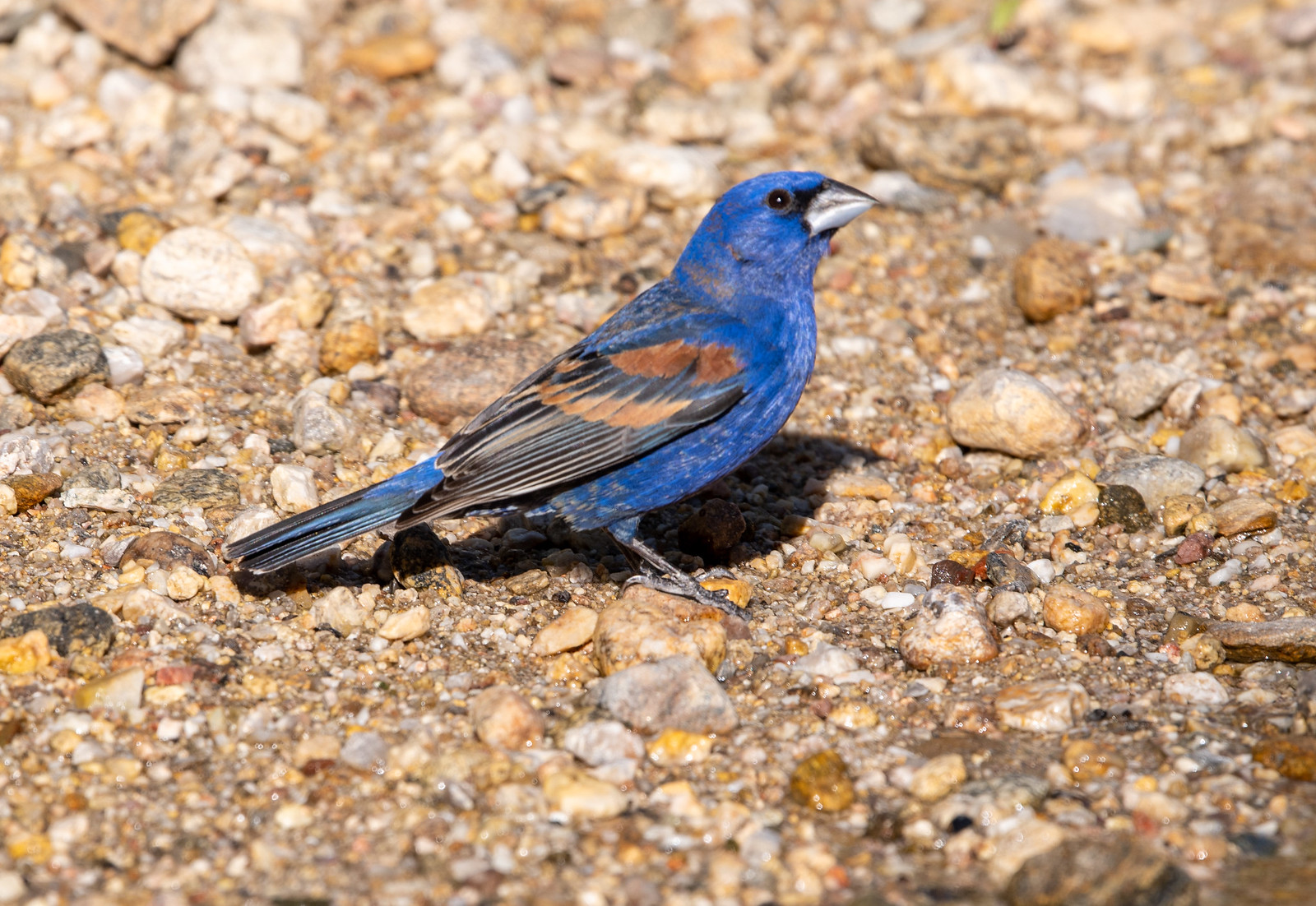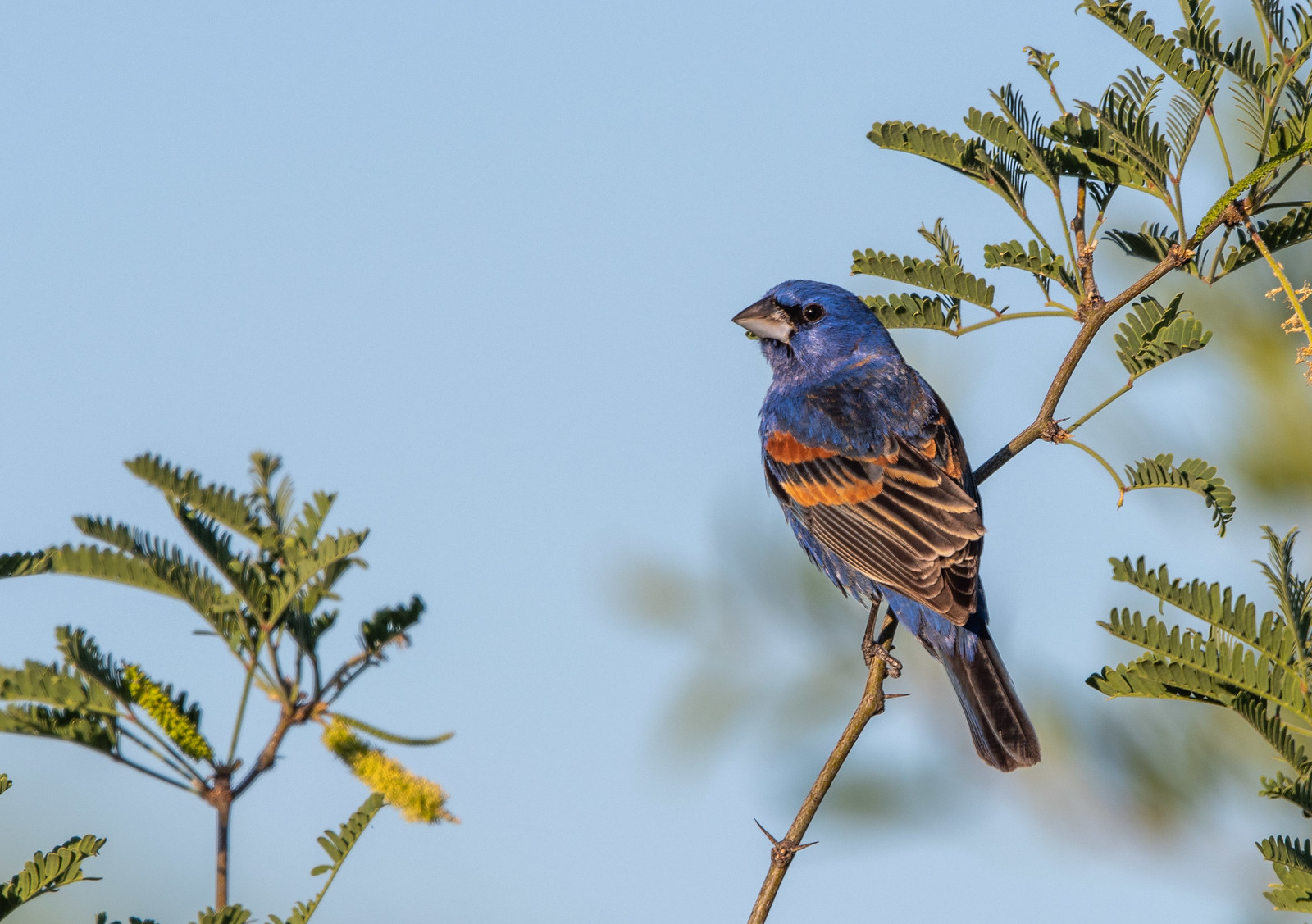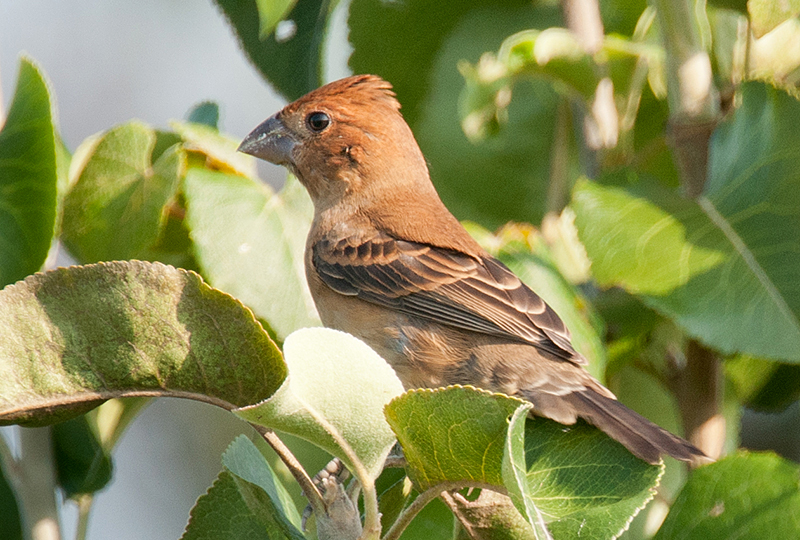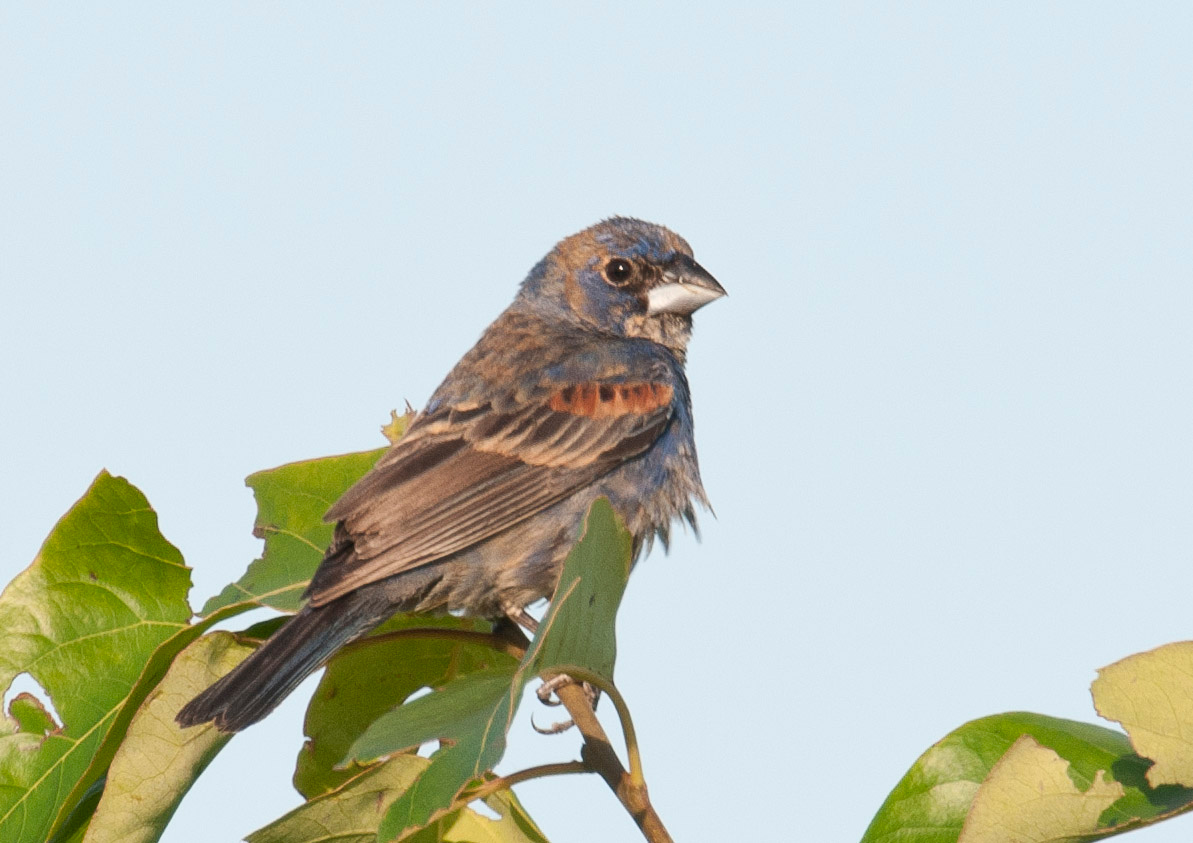| Early Spring Date: | April 20 |
| Late Spring Date: | May 31 |
| Infrequently Seen | |
Spring: Blue Grosbeaks are uncommon spring migrants in the Washington metro area. They breed in the area, but they are infrequently seen at Monticello Park — during the majority of years since 2005, no spring sightings have been recorded. The closest place to see breeding Blue Grosbeaks is the hike-bike trail in back of Huntley Meadows.
Fall: A Blue Grosbeak has never been recorded at Monticello during the fall.
Where to See Them in the Park
Blue Grosbeaks prefer fields next to woodlands, and Monticello does not offer such habitat. There is no good place to look for them in the park.
Physical Description



Male Blue Grosbeaks are a lovely indigo. Their wings are black with rufous wingbars. They have a large bill, and their head can look misshapen, as if someone has dented it in the back. They look like Indigo Buntings, but the buntings are smaller and not as sleek. Also, the buntings have a rounder head, smaller bill, and no rufous wingbars.

Female Blue Grosbeaks are rusty brown rather than indigo. They have black wings and rusty brown wingbars, but the wingbars do not stand out as much as on the male. The large bill and misshapen head are important fieldmarks.

Immature males have some blue plumage and look like a combination of a male and a female.
Vocalizations
The call note of the Blue Grosbeak is a loud chink, which does not sound as crisp and clean as the call note of the Rose-breasted Grosbeak. The song is a long warble that sounds like a Warbling Vireo.
Hear the vocalizations of the Blue Grosbeak.Notes
Blue Grosbeaks winter in Central America and the Caribbean, and their breeding range in the eastern United States does not extend much farther north than the Middle Atlantic States. They currently are expanding their range northward.
Origin of Names
Common Names: Blue from the plumage. Grosbeak from the large bill.
Genus Name: Passerina means sparrow-like.
Species Name: Caerulea means blue.
Blue Grosbeak video footage
Return to the Index
